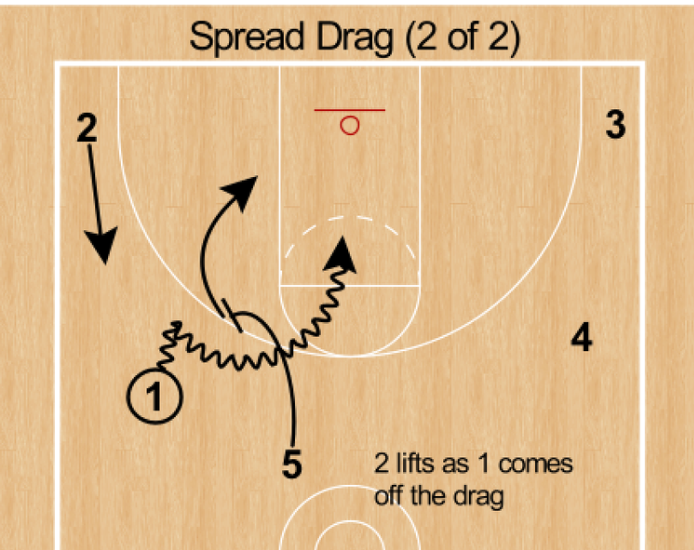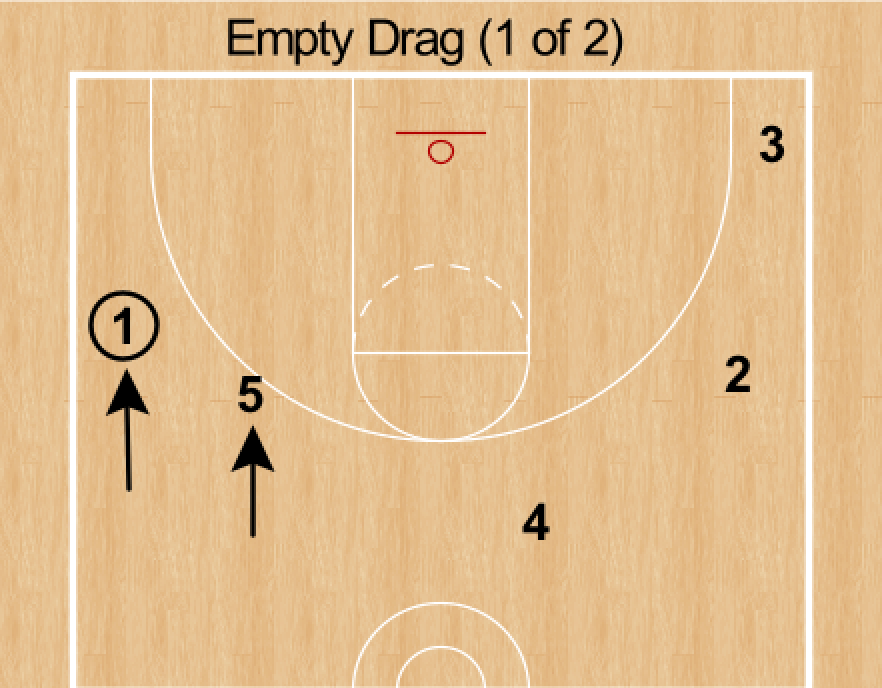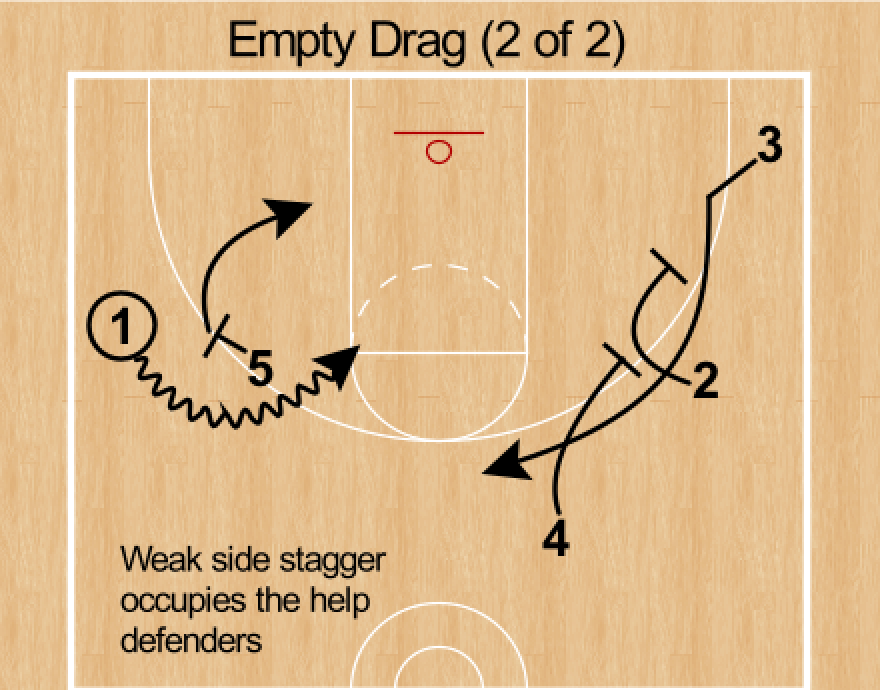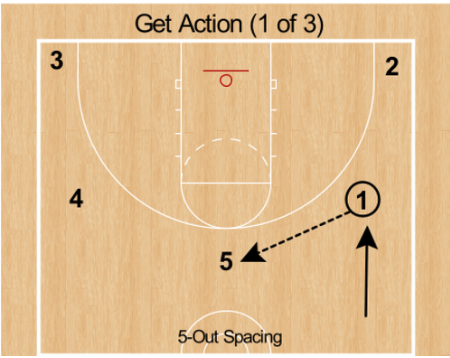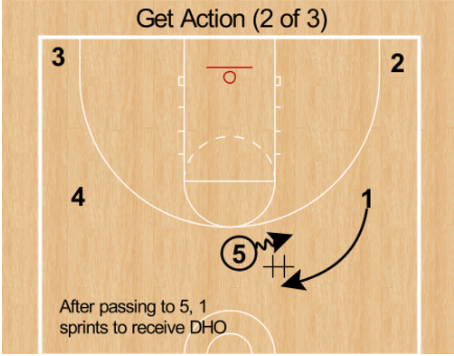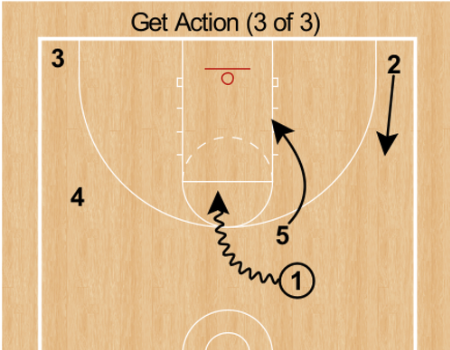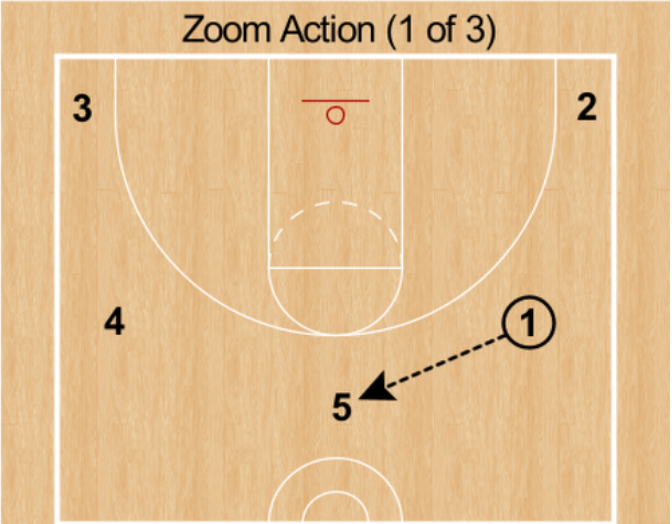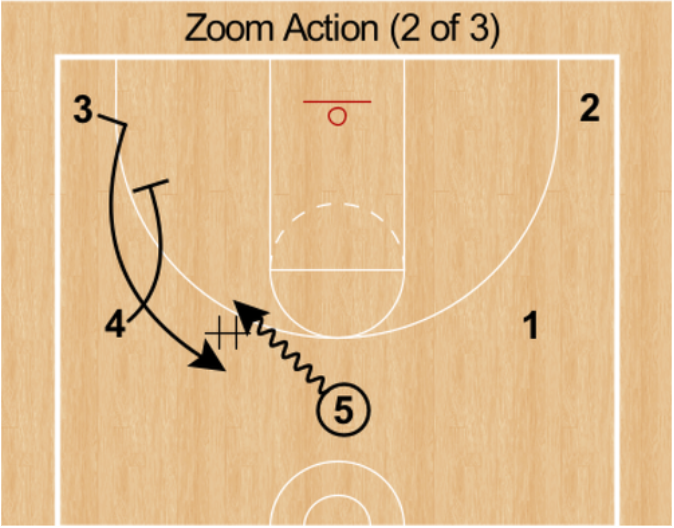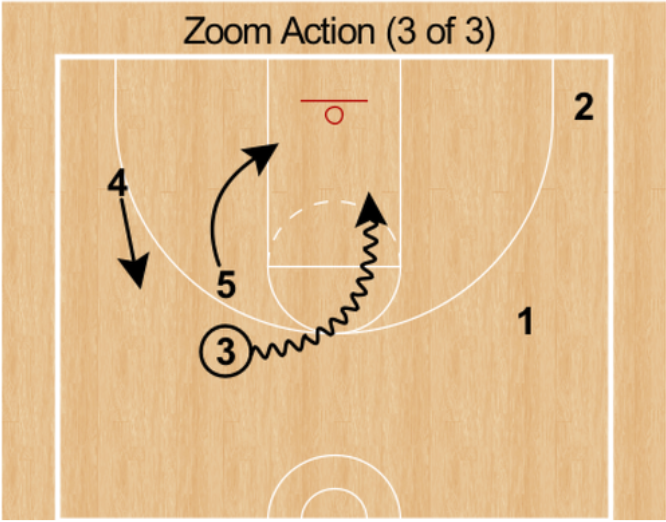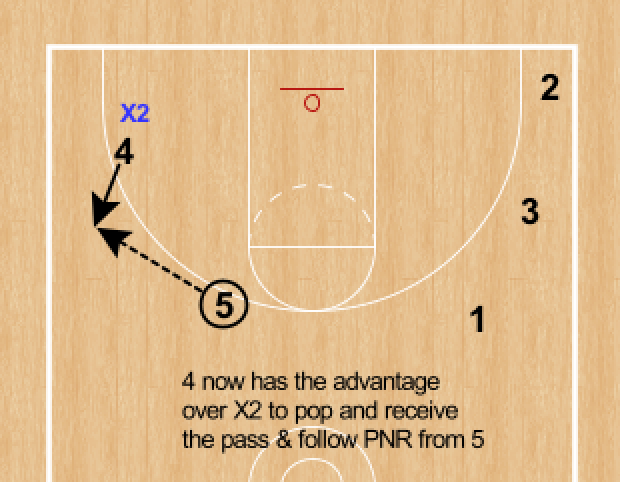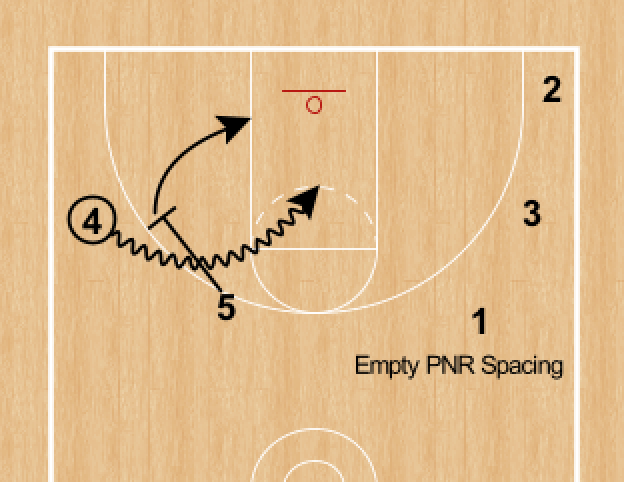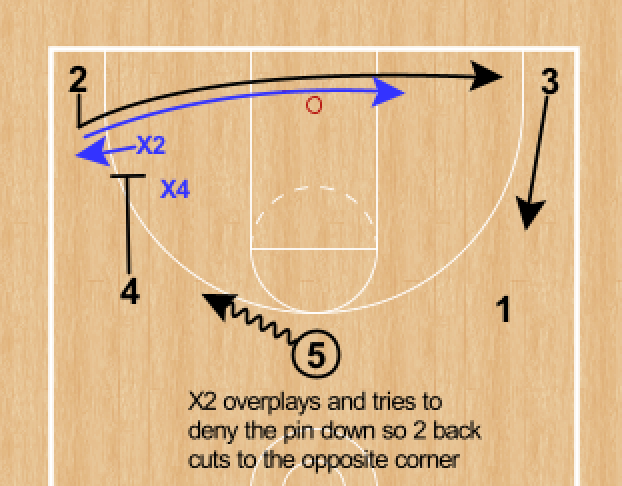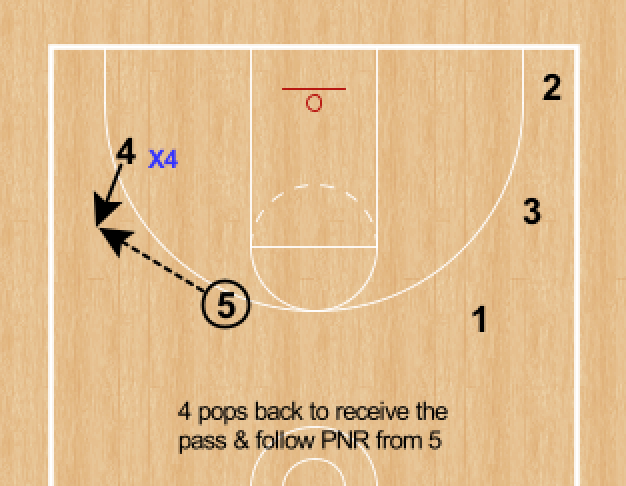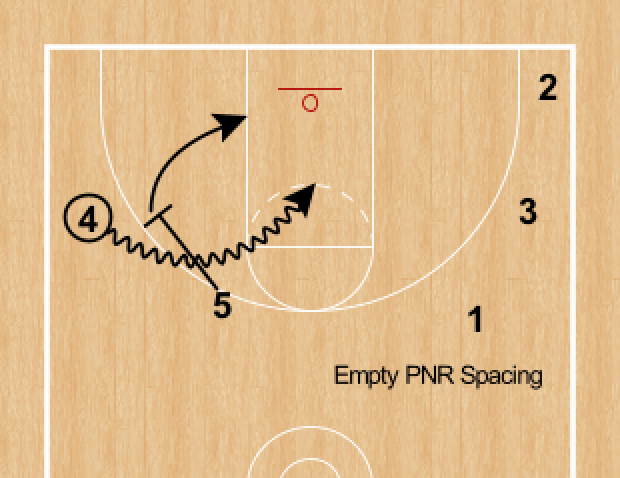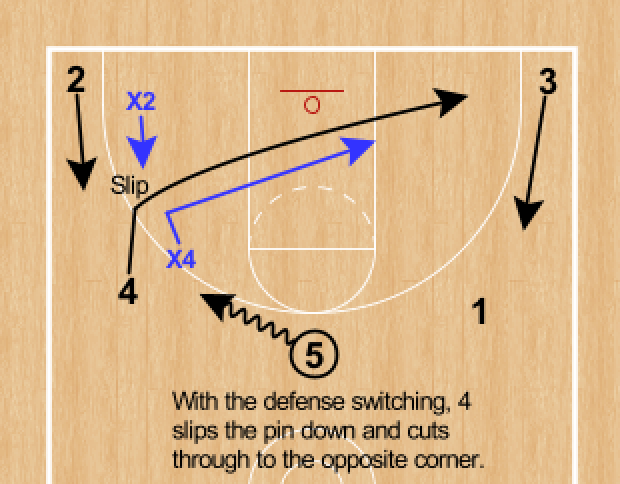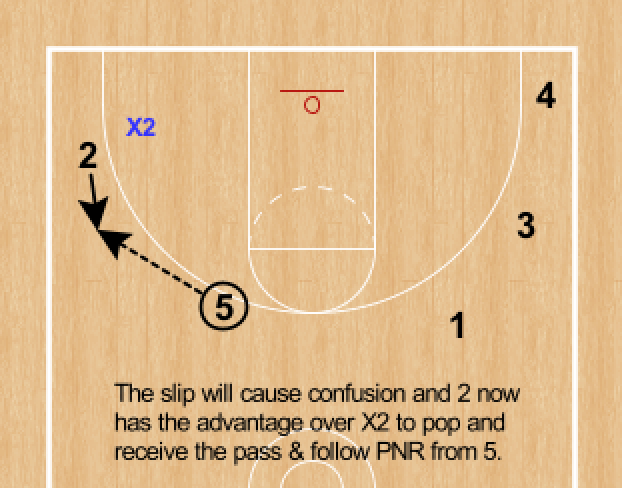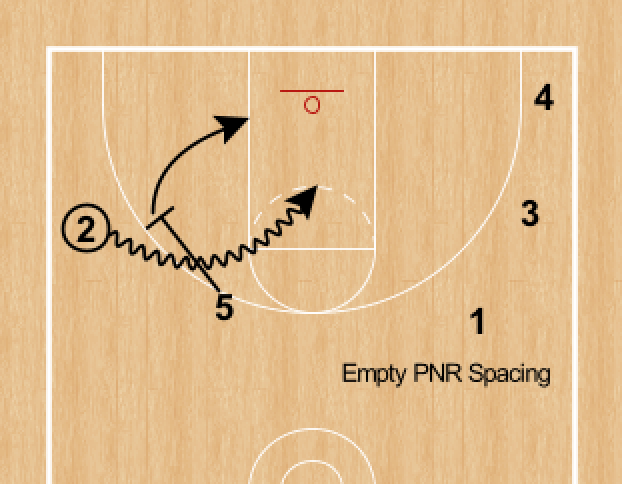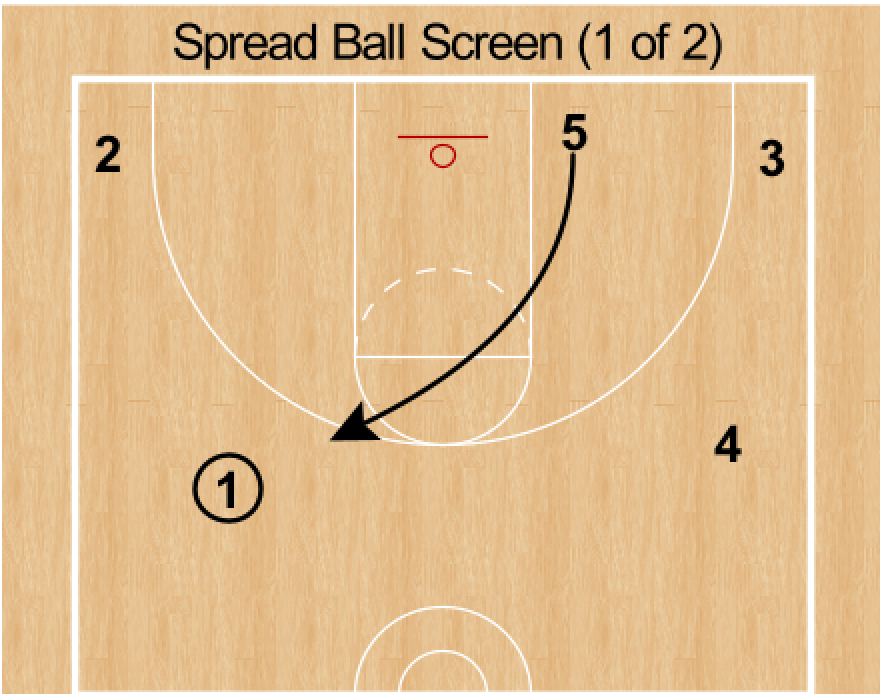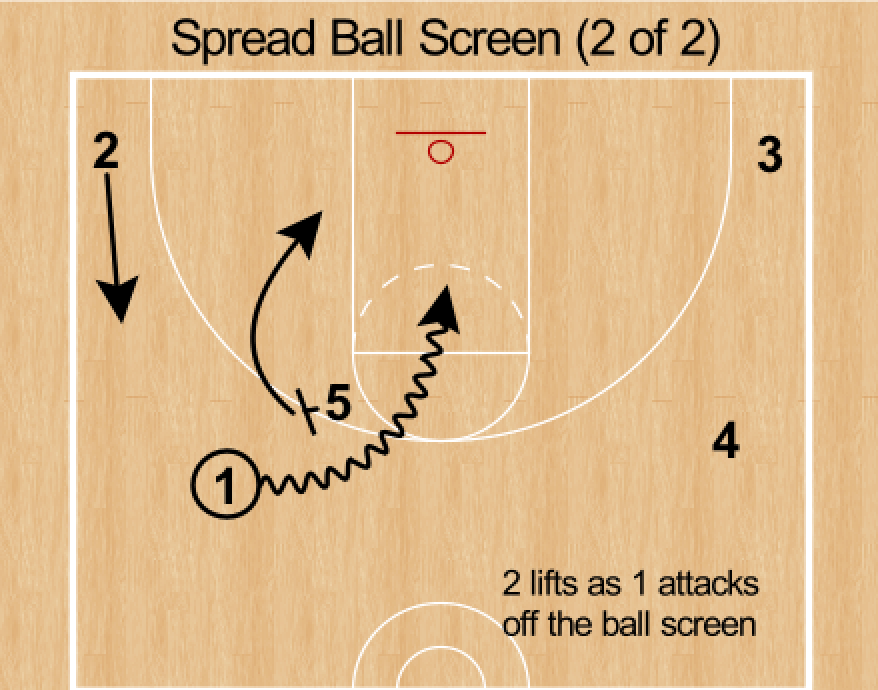Northern Iowa’s 5-Out Offense
5-Out Offense Overview:
Over the past few seasons, Northern Iowa has been one of the most efficient offensive teams in all of college basketball. Their offense being one of the biggest factors in claiming two Missouri Valley regular season championships in the past three seasons. Sure it helps when you have a power five-level scorer in point guard, AJ Green, but Northern Iowa’s 5-out offense is perhaps the biggest reason for their success.
In this breakdown, we will cover how Northern Iowa flows into their 5-out spacing in transition, their go-to actions to create early offense, before doing a deep dive into the staple of their 5-out offense, “zoom action.”
5-Out Spacing:
To flow into 5-out spacing, Northern Iowa will sprint their wings to the deep corners in transition to pull the defense lower. After receiving the outlet the point guard will bring the ball up one side of the floor, while the 4 man fills the opposite side of the floor.
If the 5-man is behind the ball in transition, he will simply trail to the top of the key to complete the 5-out spacing. If the 5-man is ahead of the ball in transition and can get behind the defense, he should look to run to the rim looking for the ball. If he does not receive a kick ahead at the rim, he typically pops or lifts to the top of the key to flow into their next 5-out action.
Early Offense—Drag Screens:
One action that Northern Iowa routinely flows into from transition, especially if their 5-man is trailing the ball handler, is a drag screen. Simply put, drag screens are essentially ball screens set in transition.
Northern Iowa’s 5-man look to set the drag screen just inside of the three point line. Setting the screen just inside the line allows the ball handler to pull up for three if the on-ball defender decides to go under the ball screen.
The 5 man also wants to set the drag screen at an angle that forces the on-ball defender to have to go over the top of the screen—forcing the defender over top of a ball screen creates an immediate numbers advantage for the offense.
Of course, this hasn’t been too difficult to accomplish over the past few seasons. Northern Iowa’s primary ball handler, AJ Green, has been one of the most efficient pull up jump shooters in the country during this time. Defenders have to go over the top of the drag screen—going under the screen almost guarantees a high percentage pull up three being taken.
In this breakdown, we will cover the two main types of drag screens Northern Iowa flows into, the “spread” and “empty” drag screens:
Spread Drag
When we refer to a “spread drag” that is simply a drag screen set with spread ball screen spacing. The drag screen will be set in the slot, with a player located in the strong side corner, in addition to two players spaced along the weak side.
As the ball handler is attacking off the drag screen, the player (2) in the strong side corner “shakes” or lifts to the wing. By doing this, he forces his defender to make a decision—help on the screener rolling to the rim, or stay with the shooter lifting to the wing.
Empty Drag
An “empty drag” simply means the strong side corner is empty, meaning the three players not involved in the drag screen are spaced along the weak side. Ideally with an empty drag, you would like to set the ball screen at the wing.
Since the strong side corner is empty, the defender who would typically “tag” or help on the screener rolling to the rim is removed. This puts extra pressure on the two defenders guarding the drag screen action to be on the same page with their communication and coverage.
Anytime Northern Iowa flows into an empty drag screen with the three players spaced on the weak side, they will set a staggered screen for the player in the weak side corner. This weak side stagger occupies the help defenders and helps create space for the drag screen action.
To dive deeper into drag screens, be sure to checkout the Keys to an Effective Drag Screen breakdown.
Early Offense—“Get” Action:
In addition to drag screens, Northern Iowa will also flow into what is commonly known as “get” action to create early offense.
“Get” action is simply when the ball handler passes the ball to a player (usually to the trailing big) and then immediately sprints to receive a hand off from that same player. From there, the reads for the two players involved in the “get” are the exact same as they would be with a ball screen.
If 1’s defender trails him over the top of the hand off, 1 can look to turn the corner and get downhill as the player who made the hand off (5) rolls to the rim. If 1’s defender goes underneath the hand off, 1 can look to shoot on the catch if he is a solid shooter. If not, 5 can turn after handing the ball off and “twist” or re-screen for 1 on the opposite side to force his defender over.
A “get” is a quick and efficient two-man action for Northern Iowa that is extremely hard to guard given their personnel. As you can imagine, AJ Green is the player who typically flows into “gets” seeing as how he is their primary ball handler and initiator within the half court. If you go under the handoff, Green has a quick trigger and shoots above 40% from beyond the arc. If you go over the handoff, you give Northern Iowa a numbers advantage with shooters along the perimeter to space the floor.
Zoom Action:
If Northern Iowa fails to create an advantage through their early offense triggers, they will more than likely flow into the staple of their 5-out offense, what we will call “Zoom Action.” Zoom action, also known as “Chicago” or “Blast,” is a simple three-man action that involves a pin down being set for a player to receive a dribble handoff.
In Northern Iowa’s offense, “zoom” is triggered when the ball is centered to the 5-man at the top of the key and the ball handler who passed it to the 5-man does not sprint into a “get.”
When the 5-man receives the centering pass, he takes 1-2 dribbles along the three point arc either direction. This triggers a pin down from the strong side “45” (4) for the strong side corner (3).
The player in the corner (3) will set his defender up before “zooming” off 4’s pin down screen to receive the dribble handoff from 5. The player receiving the DHO (3) wants to run through the handoff, looking to turn the corner and get downhill.
After handing the ball off, 5 will roll to the rim, while player who set the initial pin down (4) “shakes” or lifts for a possible kick back pass. Lifting also forces his defender to make a decision—help on 5 rolling to the rim, or stay with the shooter as he lifts to the wing.
Zoom Action Counters:
As you can imagine, defenses use a number of different coverage to try and neutralize Northern Iowa’s zoom action. Teams may try and blow up the pin down, trap the dribble hand off, etc. Luckily, Northern Iowa has a counter to almost any defensive coverage within their zoom action.
Often times these counters lead to wing dribble handoffs or ball screens with three players spaced along the weak side.
Below are the main counters and reads within Northern Iowa’s zoom action:
Curl
If the defense tries to blow-up the pin down or switches late, the player in the corner will tight curl around the pin down and empty to the opposite corner. The screener will then pop to receive the pass & follow ball screen from 5.
Reject
If the defense overplays or denies the pin down, the player in the corner will reject the pin down and back cut to the rim. If they do not receive the pass on the initial reject, that player will empty to the opposite corner. The screener will then pop to receive the pass & follow ball screen from 5.
Slip
If the defense is switching the pin down, the player setting the pin down will slip to the rim and the player in the corner will lift to receive the pass & follow ball screen.
Spread Ball Screen:
If Northern Iowa fails to create an advantage through their early offense triggers, zoom action or the possession gets late into the shot clock, they will often times flow into a spread ball screen.
Similar to the drag screen we covered above, the 5-man looks to set a ball screen for the ball handler in the slot, while the three off ball players space the floor (one player in the strong side corner, and two players on the weak side).
The 5-man again wants to set the ball screen at an angle that forces the on-ball defender to have to go over the top of the screen—forcing the defender over top of a ball screen creates an immediate numbers advantage for the offense.
As the ball handler is attacking off the spread ball screen, the player (2) in the strong side corner “shakes” or lifts to the wing. By doing this, he forces his defender to make a decision—help on the screener rolling to the rim, or stay with the shooter lifting to the wing.
The ball handler will first look to turn the corner and attack downhill. If he is able to engage and draw the screener’s defender, he can look to hit 5 as he rolls to the rim. If the off ball defenders help on the ball screen action, the ball handler can look to kick it back to the player shaking up from the strong side corner for a shot, drive or post entry. If none of the above options are available for the ball handler, he can always kick it to the weak side for a shot or drive.




